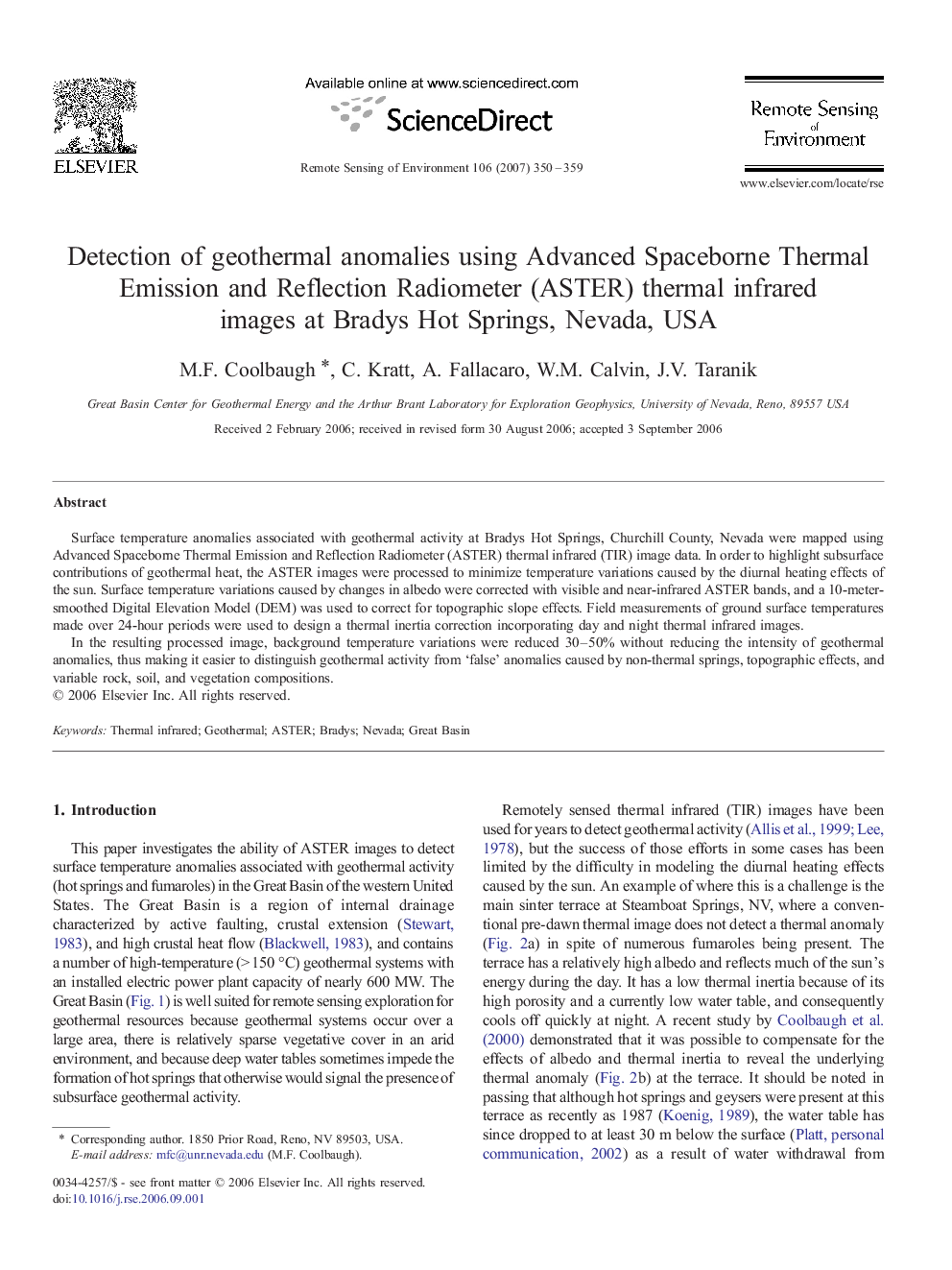| Article ID | Journal | Published Year | Pages | File Type |
|---|---|---|---|---|
| 4460778 | Remote Sensing of Environment | 2007 | 10 Pages |
Surface temperature anomalies associated with geothermal activity at Bradys Hot Springs, Churchill County, Nevada were mapped using Advanced Spaceborne Thermal Emission and Reflection Radiometer (ASTER) thermal infrared (TIR) image data. In order to highlight subsurface contributions of geothermal heat, the ASTER images were processed to minimize temperature variations caused by the diurnal heating effects of the sun. Surface temperature variations caused by changes in albedo were corrected with visible and near-infrared ASTER bands, and a 10-meter-smoothed Digital Elevation Model (DEM) was used to correct for topographic slope effects. Field measurements of ground surface temperatures made over 24-hour periods were used to design a thermal inertia correction incorporating day and night thermal infrared images.In the resulting processed image, background temperature variations were reduced 30–50% without reducing the intensity of geothermal anomalies, thus making it easier to distinguish geothermal activity from ‘false’ anomalies caused by non-thermal springs, topographic effects, and variable rock, soil, and vegetation compositions.
